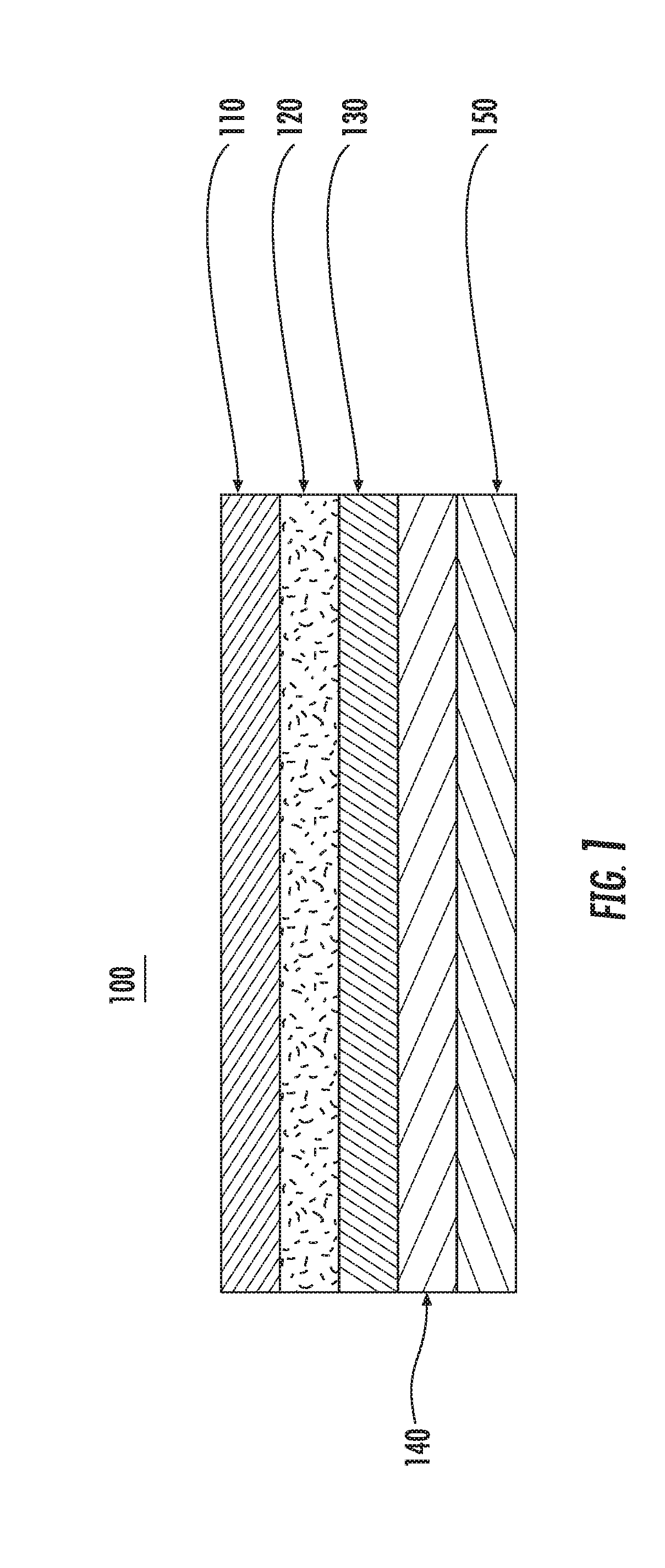Method for manufacturing a transdermal device
- Summary
- Abstract
- Description
- Claims
- Application Information
AI Technical Summary
Benefits of technology
Problems solved by technology
Method used
Image
Examples
Embodiment Construction
[0015]Reference will now be made in greater detail to a preferred embodiment of the invention, an example of which is illustrated in the accompanying drawings. Wherever possible, the same reference numerals will be used throughout the drawings and the description to refer to the same or like parts.
[0016]The method for producing transdermal devices of the present invention includes providing layered web material. Starting web of layered web material is transported to cutting station 205 where it is through-cut along horizontal lines into separable strips, and kiss-cut along vertical lines down to the depth of the release liner. Portions where horizontal lines and vertical lines intersect can be cut out to provide rounded corners for zones of layered web material. For example, dies can be used to kiss-cut or punch out the portions. The portions can have a star or diamond-shaped so as to provide rounded corners for zones. Rounded corners can be cut before or after horizontal lines are ...
PUM
 Login to View More
Login to View More Abstract
Description
Claims
Application Information
 Login to View More
Login to View More - R&D
- Intellectual Property
- Life Sciences
- Materials
- Tech Scout
- Unparalleled Data Quality
- Higher Quality Content
- 60% Fewer Hallucinations
Browse by: Latest US Patents, China's latest patents, Technical Efficacy Thesaurus, Application Domain, Technology Topic, Popular Technical Reports.
© 2025 PatSnap. All rights reserved.Legal|Privacy policy|Modern Slavery Act Transparency Statement|Sitemap|About US| Contact US: help@patsnap.com



